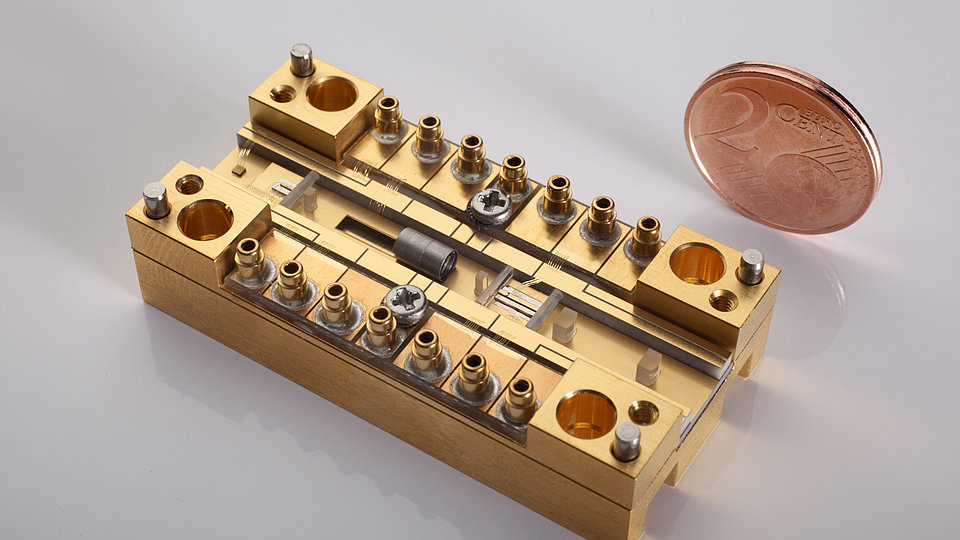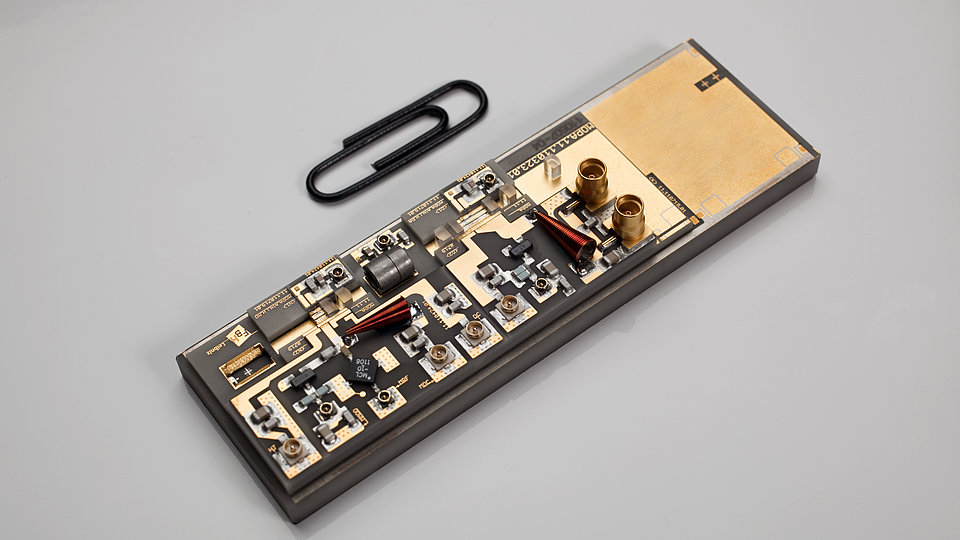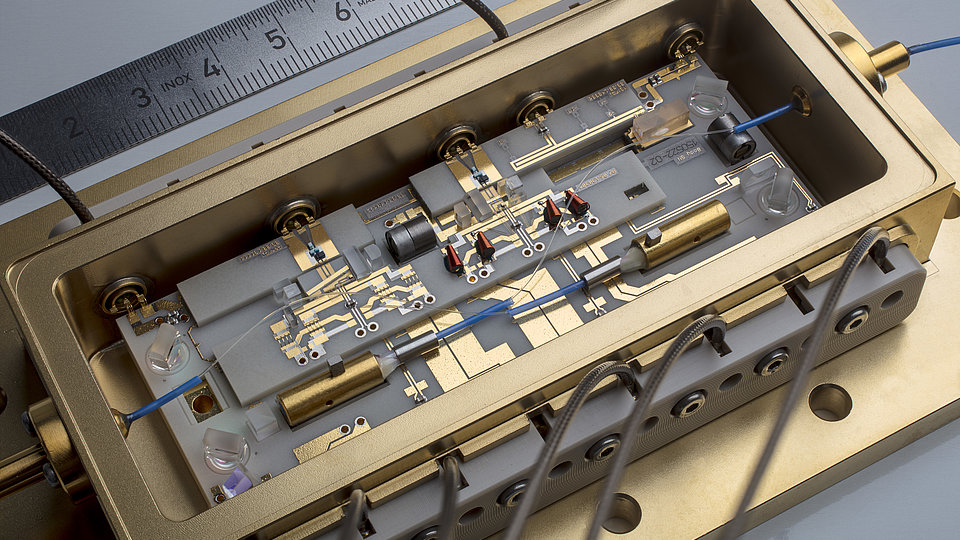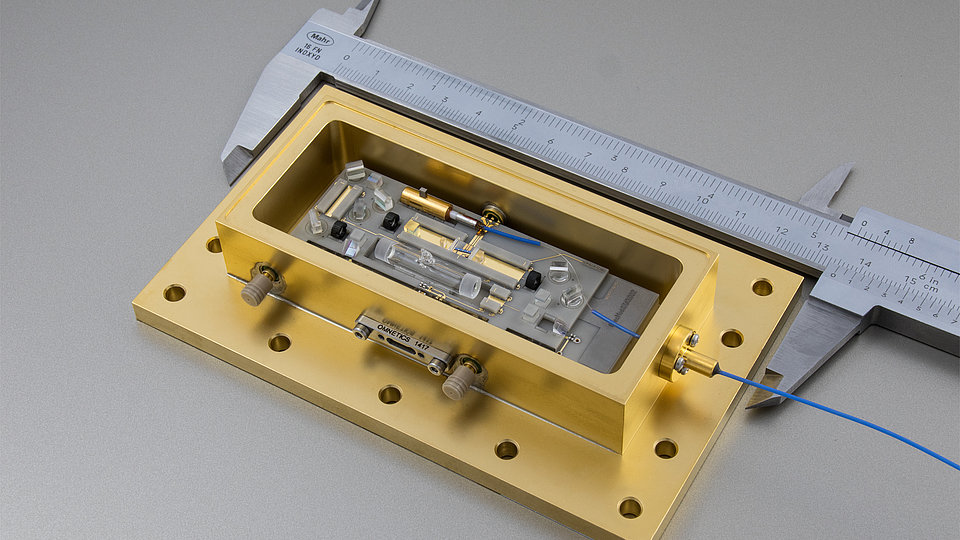Module Development
Terrestrial and space-borne applications of lasers in quantum technology and coherent satellite communication pose stringent requirements on electro-optical performance, compactness and robustness of technical solutions. Whenever these requirements cannot be met by a single monolithic component, we develop complex, hybrid micro-integrated, photonic modules which combine multiple active and passive components in a compact and robust design. To this end we cover the whole development chain from reviewing requirements, through optical, electrical, thermal and mechanical design, to the development of test methods and test plans. If necessary, requirements resulting from space deployment are accounted for in the design and test plan development.
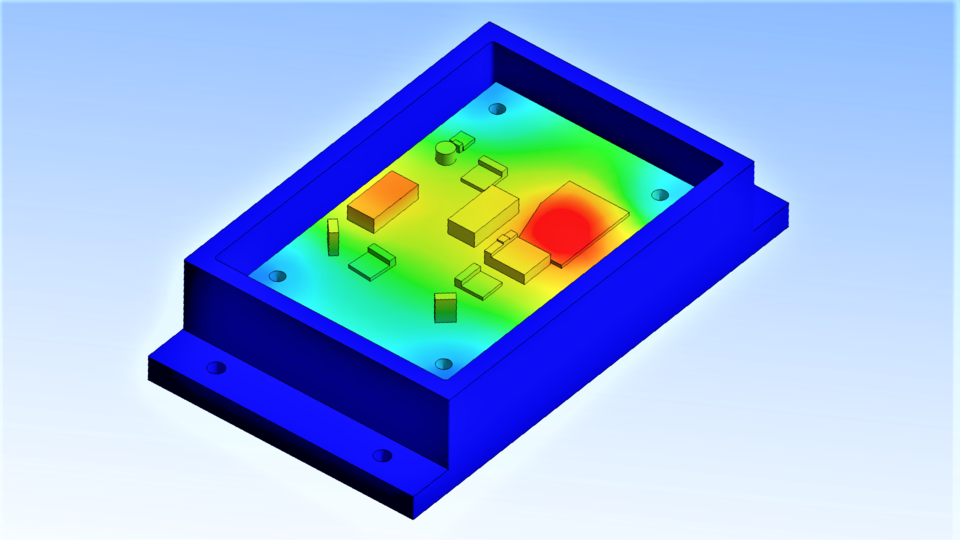
Our developments are currently focused on the following types of photonic modules:
- Laser modules, that allow for a combination of low frequency noise and high output power. In addition to spectral stability, the modules also offer high intrinsic power stability due to their compact and robust design.
- Distribution modules, that enable the superposition and switching of light from different input ports, fed e.g. by laser modules, to different output ports, providing light to e.g. the physics package of a quantum sensor. By integrating electro-optic and acousto-optic modulators, frequency modulation and shifting can be realized.
- Frequency reference modules, that provide a reference for the optical frequency e.g. of the laser modules. In addition to the spectroscopy of atomic transitions, alternative concepts are also used here - for example, by means of a Bragg grating in the smartLC project, which aims at the development of a laser system that can be used without expert knowledge.
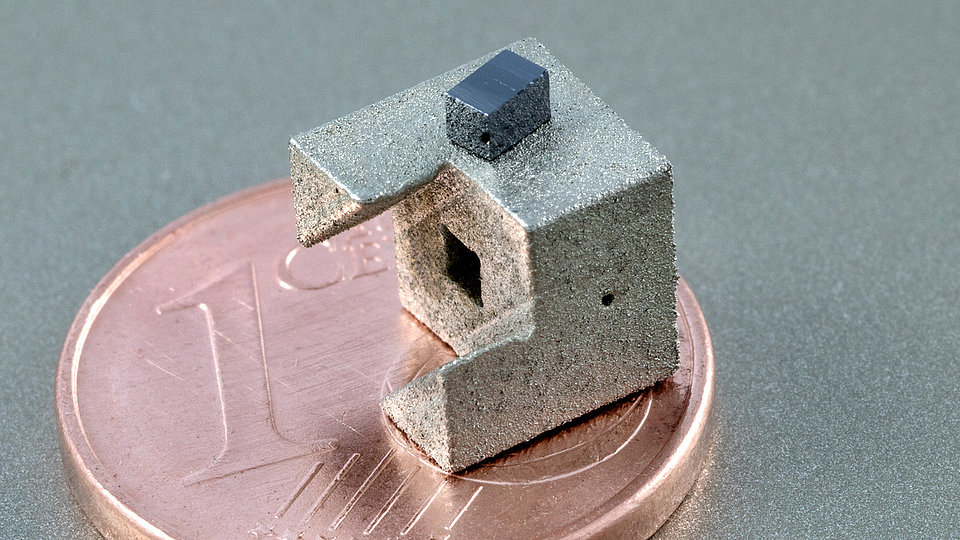
If the components required for the photonic modules are not (yet) available on the market in a suitable format, we also carry out in-house developments here - for example for optical micro-isolators.
We use a unique and very flexible, proprietary hybrid micro-integration technology to convert the CAE-based hardware models into real hardware. We also develop methods to analyze the electro-optic performance of our photonic modules in depth, specifically with respect to spectral stability, purity, and dynamic response.
